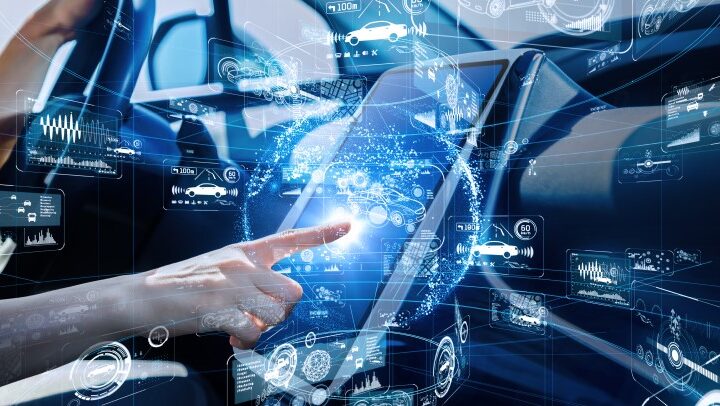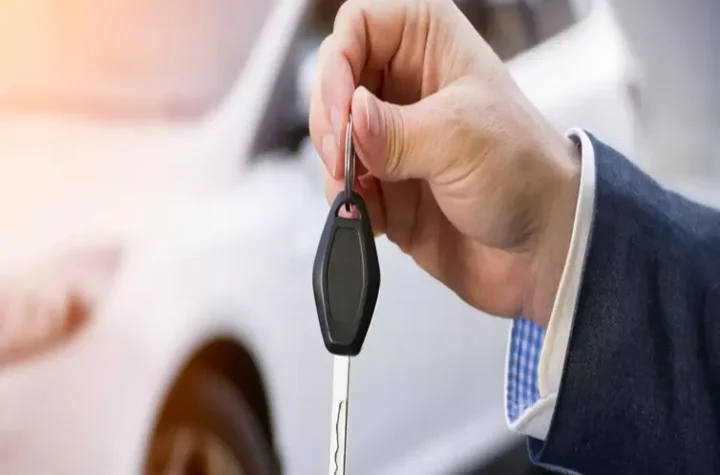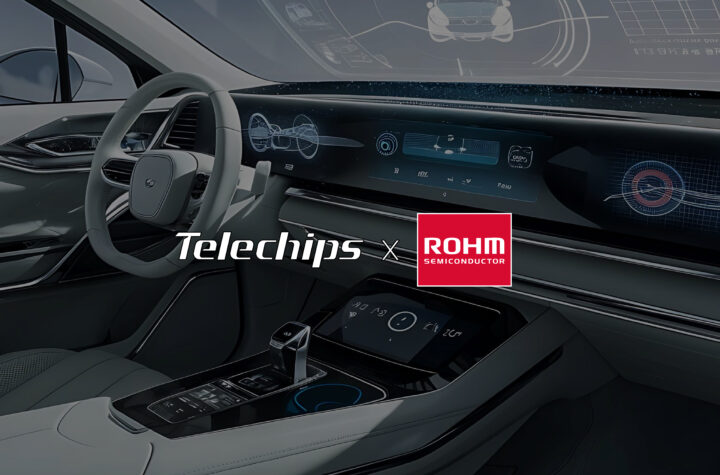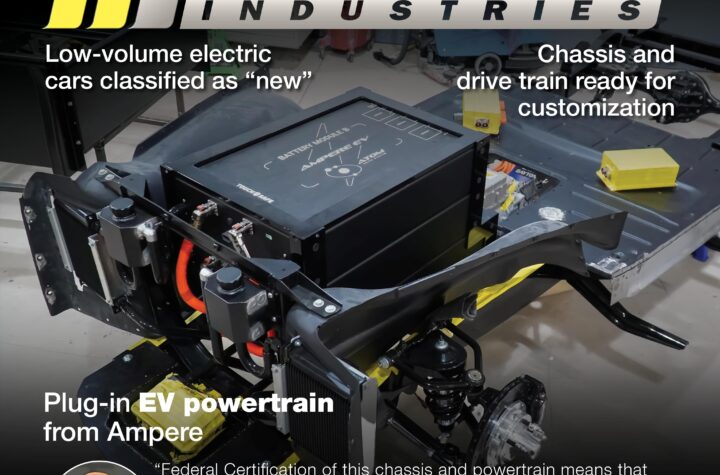
An ambitious new safety system that is being developed by government, universities and automakers is featured in Consumer Reports’ Annual Auto Issue. Instead of protecting against the aftermath of a vehicle crash, the system is designed to prevent vehicle crashes from occurring in the first place. And the magazine–a staunch advocate of stronger safety features for drivers for eight decades, from seat belts to air bags to electronic stability control–is impressed by this technology.
Here’s one way the system can help drivers: Imagine that you’re approaching an intersection at 30 mph with a green traffic light ahead. What you can’t see is that another vehicle coming in on the cross street is about to run a red light. In a typical car, you would enter the intersection and most likely be slammed in the side by the other vehicle, which could seriously injure or even kill you. But in this car, a prominent red warning light flashes on the dash and an alarm blares, giving you time to hit the brakes before entering the danger zone.
That is one of several crash scenarios that can be prevented by this system. It allows cars in the same area to communicate with one another over a wireless network, exchanging data about each vehicle’s speed, location, and direction of travel. With that information, the system can determine whether a crash is likely and warn drivers to brake. In more advanced designs, it can even brake the car if a driver doesn’t respond quickly enough.
According to the National Highway Traffic Safety Administration, such a system has the potential to help drivers avoid or minimize up to about 80 percent of crashes involving unimpaired drivers.
In addition to vehicle-to-vehicle (V2V) communication, systems are also being developed that allow cars to communicate with roadside infrastructure, such as traffic lights, and work and school zones. Taken together the technology is now often referred to as V2X.
Two of CR’s staffers got to experience V2X technology firsthand. One drove eight V2X-equipped vehicles from different automakers at one of NHTSA’s driver clinics in Alameda, Calif. to see how the technology helps in scenarios such as passing on a road when there’s an oncoming car, detecting vehicles in a car’s blind spot, and avoiding a driver who’s running a red light. Another staffer got to see Ford’s Intelligent Intersection in Dearborn, Mich, and how vehicles communicate with traffic signals as well as other vehicles. Overall, they both came away impressed with the effectiveness and potential safety benefits of the systems.
Implementing V2X or connected-vehicle technology on a mass scale is still several years away, and it will need to address concerns about privacy and cyber security to be accepted by the public. While such systems will be more effective when the majority of the vehicle fleet is so-equipped, experts say benefits can be seen even with low levels of penetration.
“These systems are being aggressively developed because they could be the next big safety breakthrough,” said Rik Paul, automotive editor, Consumer Reports. “But adequate oversight of how the information is used is essential to ensure the privacy of drivers and to prevent abuse.”
The full story “Stopping crashes with smarter cars” will be available on www.ConsumerReports.org at 6 a.m. on February 21st and in the Annual Auto Issue of Consumer Reports on newsstands February 28th until May 7th. Updated daily, Consumer Reports.org is the go-to Website for the latest auto reviews, product news, blogs on breaking news and car buying information. Check out CR’s ongoing Twitter feed at @CRCars.
What’s happening now
Some regions are already using wireless systems that allow vehicles and roadside infrastructure to interact to help improve traffic and the environment. Electronic toll collection is now common.
Highways in Dallas, Minneapolis, San Diego, and Seattle are using traffic management programs that provide real-time data on travel time or lane closures on electronic signs placed over the roadways. Minnesota has used the system to reduce traffic volume by helping drivers reroute around slowdowns.
Seattle uses a traffic-signal-priority system that changes lights to allow emergency vehicles to pass through intersections, gives signal priority to buses, and synchronizes lights for better traffic flow.
Similar technology is helping truckers save fuel by letting them pass through electronic drive-by weigh stations instead of sitting and idling for long periods. Truckers can simply drive over road sensors that calculate and report the truck’s weight.
How talking cars can protect you
Vehicle-to-vehicle communication systems are designed to prevent crashes in a number of scenarios. Federal officials have conducted several driver clinics over the past year in which public volunteers have been able to experience the technology and see how these features can help them avoid accidents:
Intersection assist. When you approach an intersection, it alerts you if another vehicle is traveling at such a speed on a cross street that it could run a red light or stop sign and hit your car in the side. This helps prevent common and often fatal T-bone accidents.
Left-turn assist. When in an intersection, it alerts you if there’s not enough time to make a left-hand turn because of oncoming vehicles. This can keep you from turning even when you can’t see the oncoming car.
Do-not-pass warning. When driving on a two-lane road, the system warns you when a vehicle coming in the opposite direction makes it unsafe to pass a slower-moving vehicle
Advance warning of a vehicle braking ahead. The system emits an alert when a vehicle that’s two or more cars ahead in the same lane–and possibly out of sight–hits the brakes unexpectedly. This can help prevent a rear-end collision when you’re caught by surprise.
Forward-collision warning. A warning will sound if the system detects that you’re traveling at a speed that could cause you to hit a slower-moving vehicle in the rear. It will also give you advance warning of a stopped vehicle in your lane that you may not see because of a vehicle in front of you or because it’s around a bend in the road.
Blind-spot/lane-change warning. When traveling on a multilane road, this illuminates a warning light when a car is positioned in your blind spot. It also emits a loud beep if you activate your turn signal when it’s unsafe to change lanes. V2X is more accurate than current blind-spot monitoring systems that use cameras or radar and can even warn you of a car that’s accelerating into your blind zone, which conventional systems can’t do.
An intelligent intersection can transmit information about a traffic signal – whether it is red, yellow, or green – to vehicles in the surrounding area. It can also transmit a GPS location correction factor to help precisely pinpoint vehicle lane position. Infrastructure demands are modest, limited to an antenna, transmitter, and a data feed from the signal. The system in the vehicle calculates if a driver is likely to run through a red light or nearby stop sign and warns them to stop, avoiding a crash.
Consumer Reports is the world’s largest independent product-testing organization. Using its more than 50 labs, auto test center, and survey research center, the nonprofit rates thousands of products and services annually. Founded in 1936, Consumer Reports has over 8 million subscribers to its magazine, website and other publications. Its advocacy division, Consumers Union, works for health reform, food and product safety, financial reform, and other consumer issues in Washington, D.C., the states, and in the marketplace.















More Stories
Southfield Classics utilizes Ampere EV engineering to become the first manufacturer to achieve Low Volume Vehicle Manufacturer Certification
Sika – where battery storage technology for EVs, wind and solar meet
Battery pack solutions from PPG